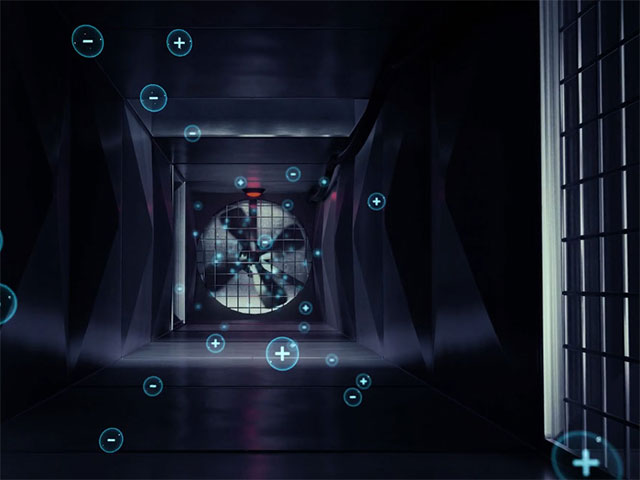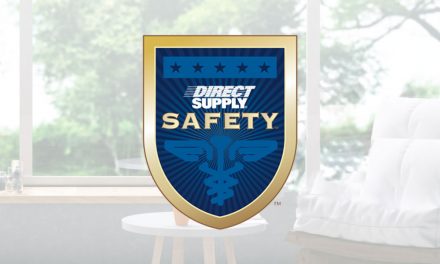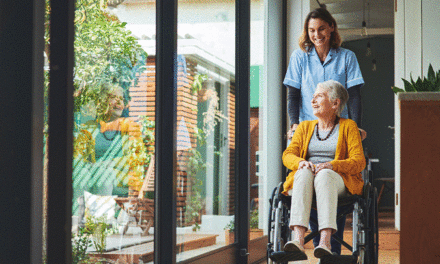Bipolar Ionization Technology: A Powerful Indoor Air Quality Solution for Senior Living Facilities
Bipolar ionization can help to improve your facility’s indoor air quality (IAQ) for the benefit of both residents and staff. Along with other IAQ solutions, ionization technology may reduce the risk of infection in your facility and provide an indoor environment that promotes health and wellness for all who enter its doors.
In this article we take a look at the state of long term care’s indoor air quality today and discuss some common bipolar ionization FAQs to help you determine if this technology is right for you.
Indoor Air Quality and Long Term Care
The Desire for Increased Safety in Senior Living
According to a recent survey of our customers and their residents, when it comes to selecting a long term care facility, demonstrated safety is a top concern. A second recent survey reinforced that this concern is shared by many Senior Living Administrators, and that creating safer, healthier environments that protect against COVID and other infectious diseases remains a primary focus for Admins.
The IAQ Disconnect
Indoor air quality (IAQ) impacts the health and safety of residents and staff. Despite this, some operators believe improving IAQ is unnecessary, and don’t give it the focus it deserves. This lack of acute attention paid to improving a building’s indoor air quality could be due to one startling statistic:
While 78% of surveyed Administrators believe their facility’s indoor air quality is good or excellent, the reality is that 81% of Senior Living facilities demonstrate inadequate levels of ventilation and air circulation due to insufficient HVAC systems1.
Why Improving Your Facility’s Indoor Air Quality Matters
Poor ventilation and air circulation can hasten the spread of infectious disease. Faster spread can lead to more hospitalizations and overall decline in the health, wellness, and safety of both residents and staff2. Many administrators cannot afford these and other complications that come with poor IAQ, yet without a strategy to improve a building’s air quality, the situation is likely to get worse, not better.
Moreover, a commitment to excellent indoor air quality can be the difference between a facility gaining or losing a resident as prospective residents and their families continue to place a high value on safety and health.
What you can do to improve your IAQ
If you are looking to demonstrate a commitment to excellent indoor air quality, you should apply a combination of proper ventilation, filtration, circulation, HVAC maintenance, and air purification solutions. Some of these solutions may include:
- An HVAC maintenance plan
- Appropriate MERV filters for your HVAC system
- Portable air purifying devices
- UV lights
- Bipolar ionization (also known as needlepoint bipolar ionization, or, NPBI(™))
Bipolar Ionization: A Powerful Air Purification Solution
While each of the previously mentioned solutions could be the right fit for your building based on your specific situation, in this article we’re going to take a deeper look at bipolar ionization as an air quality solution that integrates with your current HVAC system.
This emerging technology has already seen success in reducing risk for COVID-19 in buildings3, and it may be just what you need to demonstrate a commitment to excellent indoor air quality in your facility.
Let’s address some common FAQs that can help you determine if a bipolar ionization system is the right solution for your building.
Bipolar Ionization FAQs
What is Bipolar Ionization?
Bipolar ionization is a cutting-edge indoor air quality solution that reduces certain viruses and bacteria, such as SARS-CoV-2, influenza, and MRSA4. It works with the building’s existing HVAC system and can be used in addition to other IAQ solutions such as portable air filtration devices.
How Does Bipolar Ionization Work?
NPBI creates and releases ions into the airstream using the existing HVAC system as the delivery method. When these ions disperse throughout a space, they seek out and form bonds with particles in the air through a process called agglomeration. This creates a snowball effect in which particles begin to cluster together. The larger a cluster of particles becomes, the easier it is for the HVAC system to filter it out of the air.
Does Bipolar Ionization Create Ozone?
While there may be some ionization products on the market that do create some level of ozone, the NPBI solutions are UL 2998 certified.
Does Bipolar Ionization Work With MERV Filters?
Yes. When you use needlepoint bipolar ionization, you give your filters a bath of millions of ions per second. We recommend a combination of bipolar ionization with the highest rated filters compatible with your HVAC system.
How Does Bipolar Ionization Impact HVAC Systems?
Bipolar ionization devices are available in several options that can be retrofitted into any HVAC system. The whole process, from specification to installation and post-install ion monitoring, is professionally managed by the expert team at Direct Supply® TELS™ solutions.
In some cases, you may even extend the life of your HVAC system by using bipolar ionization. Some HVAC systems cannot withstand the pressure certain high-grade filters create. Bipolar ionization allows you to use a filter that creates less pressure, such as MERV-13 instead of MERV-16, thereby removing excess stress on your HVAC system that could cause it to breakdown prematurely.
Is a Bipolar Ionization System Right for You?
If the basic information about NPBI outlined in this article got you thinking about how to implement bipolar ionization in your facility, it’s time to speak with an account manager. This is the best way to determine exactly which solution or combination of solutions is ideal for your unique situation.
Fill out the form below to get started. We’ll be in touch with you shortly to answer any additional questions you may have as well as to learn more about your facility so we can help you determine the right IAQ solution.
Contact Direct Supply for options and pricing on NPBI
Send us your contact information and a helpful TELS representative will get in touch with you to discuss options and pricing for your organization.
2 Reddy M, Heidarinejad M, Stephens B, Rubinstein I. Adequate indoor air quality in nursing homes: An unmet medical need. Sci Total Environ. 2021 Apr 15;765:144273. doi: 10.1016/j.scitotenv.2020.144273. Epub 2020 Dec 24. PMID: 33401060.
3 The use of this technology is not intended to take the place of reasonable precautions to prevent the transmission of pathogens (including COVID-19). Comply with all applicable public health laws and guidelines as well as CDC guidance. Estimated reduction in risk of COVID-19 infection up to 41% for residents in Skilled Nursing Communities with NPBI installed in both common areas and resident rooms. Data estimates modeled from data self-submitted by communities to The CDC National Healthcare Safety Network system COVID-19 Long Term Care Facility Module and matched against our database of over 400 NPBI technology installations in Oct 2020 – Jan 2021. Outside factors such as new variants, cleaning practices, and vaccine rates vary over time and may impact the reduction in a particular community; results not guaranteed. 4/21/2021
4 Inactivation results based on sensitivity testing conducted by independent third-party testing laboratory using control chambers. Multiple data points are used to formulate performance validation statements. The technology is used in a wide range of applications across diverse environmental conditions. Results in non-lab environments will vary; clients should evaluate their individual application and environmental conditions when making an assessment regarding the technology’s potential benefits. For all independent laboratory results, contact your TELS Representative at IndoorAirQuality@Directs.com. The use of this technology is not intended to take the place of reasonable precautions to prevent the transmission of pathogens (including COVID-19). Comply with all applicable public health laws and guidelines as well as CDC guidance (https://www.cdc.gov/coronavirus/2019-ncov/prevent-getting-sick/prevention.html).




